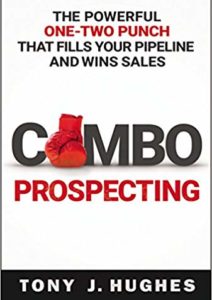In my last corporate role, I ran the Australian region for one of world’s biggest CRM software companies. It was my final role in a twenty-five year career working in the technology sector. Everywhere I worked I was always a ‘true believer’ in what I was selling – you have to be, to be successful. But now, with two years under my belt on the outside of the corporate world as a management consultant, I’ve got a different perspective.
CRM Failure Rates Are High
I’m seeing a common theme working with clients … CRM is a dirty word. That’s because CRM failure rates are high – as bad, if not worse, than that of ERP back in the Y2K stampede. It’s also because sales people tend not to embrace the technology (regarding it as an overhead that doesn’t directly help them sell) and management doesn’t trust the reports it generates. I remember when Siebel was all the rage… the next big thing after ERP in 2000. Tom Siebel ran his company very much with a command and control philosophy; and that was how the software worked. The results were less than ideal – massive enterprise software license deals that were implemented as ‘manage-up’ reporting tools and the majority of licenses languishing as unused shelf-ware.
CRM software has evolved since the client/server era where Siebel exploded onto the scene. Oracle acquired Siebel and have done a great job in modernizing and moving CRM into the cloud along with other leading providers including Salesforce, Microsoft, SugarCRM and many others. Cloud computing means that the vendor shares in the risk of successful deployment. This shared-risk / shared-reward business model has transformed many software segments. If you want a CRM initiative to be successful, I’ve got some important rules to follow, but first, why does CRM fail and where are the risks in implementation? How do you overcome the negativity and also secure the right level of funding from the CEO?
I’m not a CRM basher. I passionately believe that you have absolutely no chance of being customer-centric and creating a single source of the truth about prospects and customers without one. CRM software is the best platform to manage customer life-cycle and automate customer processes – every business should have one, but no more than one.
But here is the first big problem. The term, Customer Relationship Management has been hijacked by CRM software technology and success or failure has little to do with the tech and everything to do with how it’s implemented. Customer Relationship Management should be a strategy, then a process, then a suite of enabling technologies that place customers at the heart of everything you do.
Dr Michael Hammer coined the term, ‘business process re-engineering’, and he says: “The technology stuff is the easy stuff.” He researched why ERP implementations failed but that’s a topic for another time. Selecting the wrong technology guarantees CRM failure but choosing the right products and solutions does not guarantee success – change management is key. Here are the main reasons CRM implementations fail:
- Failure to define your customer experience strategy
- Failure to design with sales, service and support staff being the primary internal ‘customers’ and users
- Failure to integrate social selling and marketing automation
- Failure to embed sales methodology and sales process.
- Failure to configure to be a deal management and sales coaching platform.
- Failure to integrate as the single source of truth for the entire customer lifecycle
The antithesis of this list obviously gets you on the path to CRM success but how do you secure the essential support of the CEO for the right level of funding and executive commitment? You must be able to answer his or her three big questions: 1) What is this about? 2) Why is it important? 3) What will this do for us? In talking with my clients, here are my recommendations for framing the conversation with the board, CEO, or executive leadership team.
Customers at First Place
Never use the term ‘CRM’. Instead talk about ‘customer experience’, ‘customer lifecycle’, and ‘single source of the truth’. Executives understand these three terms and like them.
Focus on customer relationship management as a strategy and then a process. Define a sales methodology that drives your specific sales process so that reps can be coached to ensure that tactics and actions are linked to strategy. This approach delivers best practice and accountability in the sales team.
It’s important because it costs up to five times more to acquire a new customer than to upsell an existing one, and increasing customer value (upsell) is the best retention strategy. Yet placing customers at the heart of a business is just a cliche for most who allow finance systems to reign supreme. To be customer-centric you must have an effective CRM strategy supported by the right (Customer Relationship Management) system.
In response to the question of, what will it do for us? ‘It will help us to be customer-centric, grow revenues, reduce customer churn, improve renewals, enable better sales execution, create transparency in pipeline and deal coaching, and improve forecasting accuracy and revenue predictability; and it will provide us with a single source of the truth with a 360 degree view of the customer to support the entire customer lifecycle across all departments interacting with and supporting clients. Now what kind of ‘asleep at the wheel’ manager wouldn’t want these things?
If you’re leading a CRM initiative, remember that it must be implemented to serve users rather than as a database for management. CRM should be a strategy and a process, rather than a product and reporting tool. The system should be designed to enable customer experience and support the entire customer lifecycle. The best CRM implementations therefore incorporate sales methodology integrated within an organization’s specific sales process so that reps can be coached to ensure that tactics and actions are linked to strategy. This approach delivers best practice and accountability in the sales team. Importantly, ensure you measure the right things – you can’t manage revenue in CRM.
Constantly ask the right questions. How can we make ourselves customer-centric and enable our sales and support people to be more efficient and effective? Does this place our customers at the heart of everything we do? When selecting CRM technology, here are some considerations for sorting the wheat from the chaff.
Select software technologies that are easy to use and also offer flexibility for cloud deployment, include strong process workflow, integrate easily and affordably with social media platforms (LinkedIn, etc.), marketing automation and finance systems; include mobility capabilities and integrate with collaboration, enabling you to maintain control of your data. Implementation services also need to be from an expert who understands how to link features and functions to business value to drive increased revenue and reduced costs.
Most importantly, the implemented CRM should serve the users and improve sales productivity by enabling sales processes and deal coaching. This instead of being an imposition on them or merely serving as a database reporting tool. Finally, it must be easy to use and provide a single 360 degree view of each customer (integrated with marketing, finance and other systems) to support the entire customer lifecycle.
So, don’t let CRM failure be a dirty secret; make it a risk that needs to be managed. Ensure the proper level of investment and executive commitment rather than mere support.
This post was originally published on LinkedIn.













